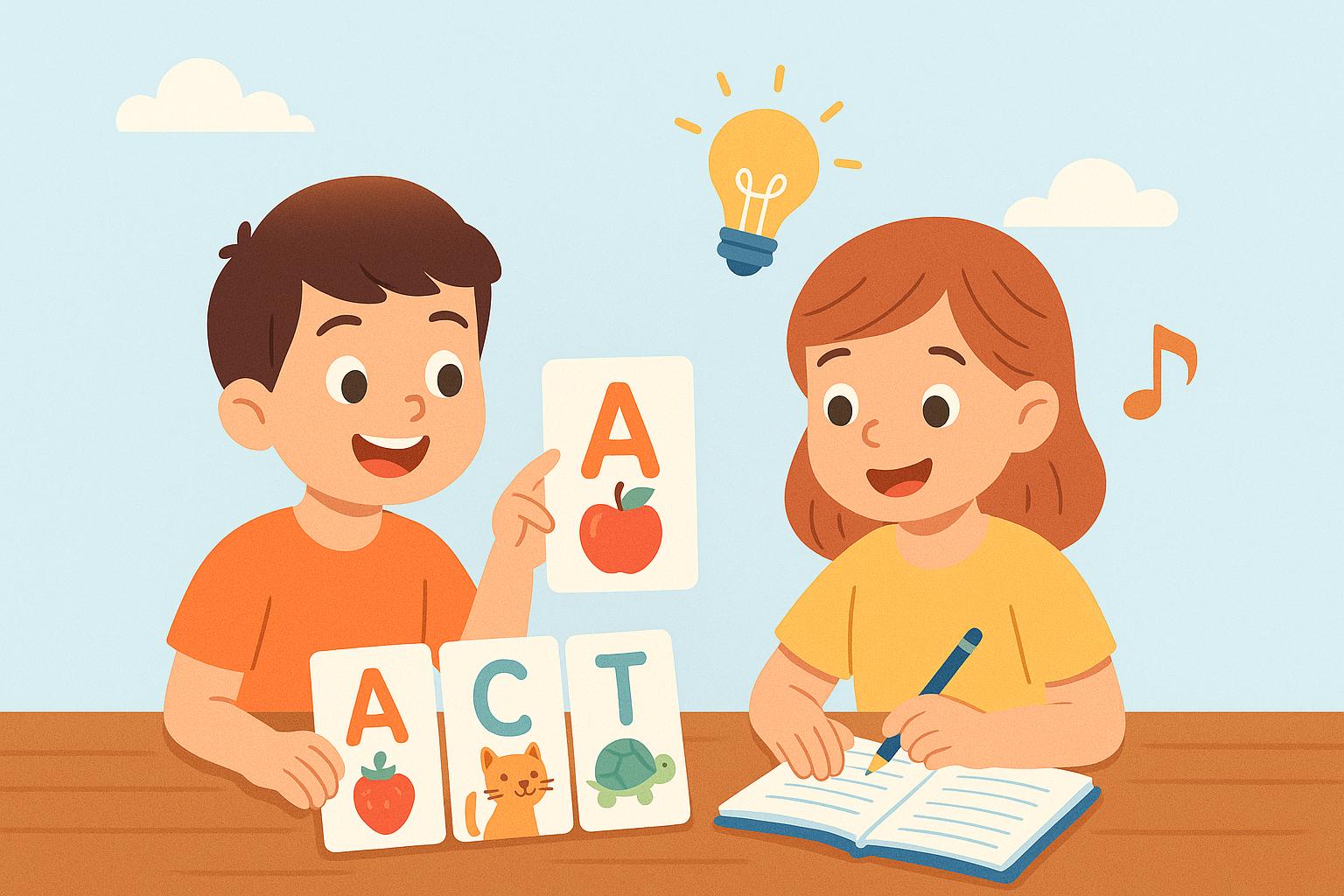Teaching your child to read may feel overwhelming — but it doesn’t have to be. With phonics, you can turn learning into a fun and rewarding journey for both of you.
Phonics is a powerful method that helps children connect letters with sounds, allowing them to decode and read new words quickly. In this simple guide, you’ll learn how to teach phonics at home step-by-step — no teaching degree needed!
What Is Phonics and Why Does It Matter?
Phonics is the method of teaching reading by linking sounds (phonemes) to letters or groups of letters (graphemes). Instead of memorizing whole words, children learn to “sound out” words they’ve never seen before.
This method helps children:
- Read new words independently
- Develop strong spelling skills
- Build a solid foundation for language and literacy
When Should You Start Phonics at Home?
Most children are ready for phonics around age 4–5, but you can continue phonics-based learning up to age 15. It’s not just for early readers — older children can also benefit from phonics to improve spelling, pronunciation, and reading fluency.
Best for Ages 5 to 15: This age group responds well to phonics-based techniques, especially when taught with fun, structured activities.s or books, it’s a great time to begin!
Step-by-Step: How to Teach Phonics at Home
Here’s a simple roadmap to follow:
1. Start with Letter Sounds, Not Names
- Focus on how letters sound, not what they’re called (e.g., “a” as in apple, not “A”).
2. Teach in Small, Fun Sessions
- 10–15 minutes a day is perfect.
- Use songs, games, and repetition to keep it fun.
3. Use Visuals and Movement
- Show flashcards with pictures.
- Let your child trace letters while saying the sound.
4. Blend Sounds Together
- Once your child knows a few letter sounds, show them how to “blend” (e.g., c-a-t = cat).
5. Introduce Tricky Words Slowly
- These are words that don’t follow usual rules (e.g., “the”, “said”). Teach them as sight words.
Fun Phonics Activities to Try at Home
Keep learning joyful with these activities:
- Sound Matching Games (match letters to pictures)
- Sing-Along Phonics Songs (YouTube has many great ones!)
- Letter Tracing Worksheets
- Phonics Blocks or Magnetic Letters
- Phonics-Based Storybooks (like “Biff & Chip” or “Bob Books”)
Common Mistakes to Avoid
Avoid these traps:
- Don’t rush into reading without sound mastery.
- Don’t correct every mistake harshly — gentle guidance works better.
- Don’t use confusing fonts or tiny print for beginners.
Patience + play is key.
Best Tools and Resources for Parents
Here are some phonics resources we recommend:
- Phonics Play (UK) – interactive games
- Teach Your Monster to Read – fun app for ages 4+
- Jolly Phonics – excellent structured program
- YouTube Channels – Alphablocks, Jack Hartmann
Free Resource for You: 5-Day Phonics Plan
Want to get started today?
Download our FREE 5-Day Phonics Plan — with simple activities and worksheets you can do at home!
[Click here to get your free copy] or [Book a Free Trial Class] with our expert phonics tutor.
Final Thoughts
Teaching phonics at home doesn’t need to be stressful. With just a few minutes a day, you can give your child the gift of reading — and the confidence that comes with it.
Start simple. Stay playful. Celebrate progress.
You’ve got this, and so does your little reader!
Join Our Physical Classes in Pune
If you’re based in Pune, your child can also attend our in-person classes.
We offer regular batches for:
- Abacus
- Phonics
- Vedic Maths
📌 Location: Near Deccan, Narayan Peth, and surrounding areas
👧🏻 For kids aged 5 to 15 years
📆 Weekday and weekend batches available
👉 Call or WhatsApp to enroll directly, or [Book a Free Trial Class].
